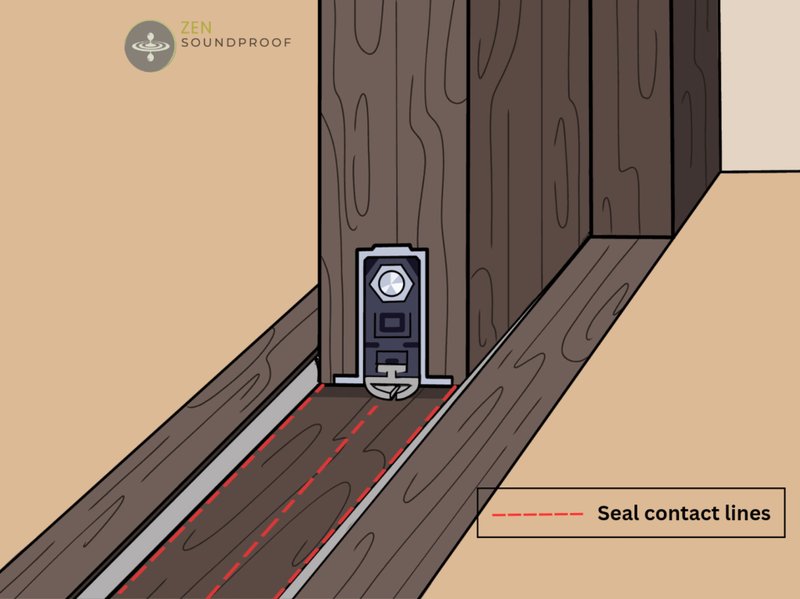
Pocket doors are a clever space-saving solution, sliding neatly into the wall when open. However, they often lack the solid sealing capabilities of traditional doors, which can lead to unwanted sound travel. Fortunately, there are several effective ways to soundproof a pocket door without sacrificing style or utility. Let’s dive into the best methods that can help you achieve that peaceful atmosphere you’ve been longing for.
Why Soundproofing Your Pocket Door Matters
You might be wondering, “Is soundproofing really necessary?” The truth is, it can significantly enhance your day-to-day living. Whether you’re working from home, trying to catch up on sleep, or hosting guests, pesky noises can disrupt your comfort. A pocket door might be practical for space efficiency, but it’s often a weak link when it comes to acoustics. If you want to maintain your personal space free from disruptive sounds, soundproofing is a worthwhile investment.
Additionally, soundproofing can also add a layer of privacy, especially in shared spaces. Imagine your children playing or a family member watching TV while you’re trying to relax. By implementing effective soundproofing measures, you can keep your conversations and activities private, creating a harmonious household environment.
Identify the Gaps and Weaknesses
Before diving into solutions, it’s essential to assess where the sound is sneaking through. Start by closely examining your pocket door. Look for any gaps around the edges or between the door and the jamb. These little spaces are often the culprits allowing sound to seep in.
Once you spot these gaps, you can prioritize your soundproofing strategy. You might find that the door itself isn’t the problem; rather, it’s the frame or the type of material used. Addressing these weak points can significantly improve your soundproofing efforts.
Weatherstripping is Your Best Friend
One of the simplest and most effective ways to soundproof a pocket door is by adding weatherstripping. This is the same stuff that keeps drafts at bay. You can find it at most hardware stores, and it’s easy to install.
Here’s how to do it:
- Clean the surfaces around the door frame where the weatherstrip will go.
- Measure your door and cut the weatherstrip to size.
- Peel off the adhesive backing and firmly press it into place along the jamb.
By sealing those small gaps, you can drastically reduce noise transmission. Plus, weatherstripping can improve energy efficiency by keeping your home comfortable.
Use Sound-Absorbing Materials
Another excellent method to consider is applying sound-absorbing materials to your pocket door. These can include acoustic panels, soundproof curtains, or even mass-loaded vinyl (MLV) sheets. Each option offers a different level of soundproofing and aesthetic appeal, so choose what fits best with your style.
For instance, acoustic panels can be attached directly to the door. They help absorb sound waves, preventing them from bouncing around the room. If you prefer a more decorative touch, soundproof curtains can be hung over the door when it’s closed, adding both style and acoustic control.
Consider Installing a Solid Core Door
If you’re looking for a more permanent solution, replacing your hollow pocket door with a solid core door might be your best bet. Solid core doors are typically much heavier and denser, which means they do a superb job at blocking sound.
While this may require some additional expense and effort, it’s a worthwhile investment for anyone serious about soundproofing. Solid core doors can significantly minimize both noise and outside distractions, creating a more tranquil living environment.
Adding a Door Sweep
Don’t forget about the bottom of the door! A door sweep can make a big difference in soundproofing. Think of it as a little barrier that blocks sound from sneaking under the door.
Installing a door sweep is straightforward:
- Measure the width of your door.
- Cut the sweep to fit, if necessary.
- Attach it to the bottom of the door using screws or adhesive.
This small addition can significantly improve your door’s soundproofing effectiveness, especially in conjunction with other methods.
Regular Maintenance and Upkeep
Lastly, keeping your pocket door in good condition is essential for maintaining soundproofing effectiveness. Sometimes, the wear and tear on the door frame or the door itself can create new gaps. Regularly inspect the weatherstripping and any soundproofing materials you’ve used.
If you notice any damage, address it promptly. For instance, if your weatherstripping is peeling or the door is sagging, make those repairs as soon as possible to keep your soundproofing efforts intact.
Final Thoughts on Soundproofing Your Pocket Door
Soundproofing a pocket door might seem like a daunting task, but with the right strategies, it can be straightforward and impactful. From weatherstripping and sound-absorbing materials to considering a solid core replacement, each method contributes to a quieter and more serene space. When you create barriers against noise, you enhance your home’s comfort and privacy.
So, the next time you feel that disturbance from the other room, remember these soundproofing tips. Delve in, choose the methods that resonate with your needs, and enjoy a peaceful retreat right in your home. With a little effort, your pocket door can become a much quieter, more inviting entryway into your personal space.
